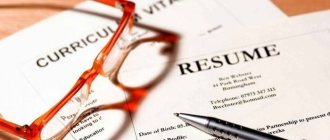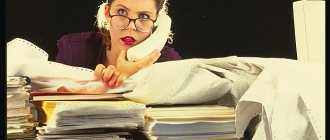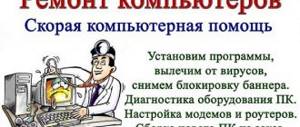A cover letter is an additional document to the submitted resume. If you send your resume to a serious company with a well-known name (brand), then
The requirements for writing a cover letter are quite high.
The document must be prepared on a separate sheet; all details, which include the date of compilation, heading, signature, name and address of the recipient, must be placed in accordance with the rules and requirements for the design of business letters.
If the resume is sent by e-mail, then the cover letter, accordingly, should be attached in Word document format. A resume sent by e-mail to less famous and prestigious companies can be accompanied by well-written text in the body of the letter, without formatting it on a separate sheet.
In this case, contact information, initials (or first and last name) and last name must be visible.
What is a cover letter
IMPORTANT! Recommendations for writing a cover letter from ConsultantPlus are available here
Written support for a resume, or a response to a vacancy , is additional information provided by a potential applicant in addition to the official information about education and work experience contained in the resume.
Job applicants who are not accustomed to such practices often miss this point from their attention or deliberately prefer not to waste time on it, because the main data is already given in the resume. Sometimes this approach can cost a candidate a potential position.
According to the survey results, more than a quarter of HR managers admitted that they did not review a candidate’s resume because of poor accompanying text, and many HR specialists also made it a rule not to review a resume at all if there was no accompanying information.
The applicant should submit such a cover letter, even if the job description did not contain such a requirement: such text is taken for granted in serious companies.
Sample documents
A cover letter is a short story about you.
It is written in free form and demonstrates your interest in a specific employer. Article navigation
- How to write a cover letter for a resume
- Cover letter sample
- Cover letter from an accountant
- Sample cover letter from a lawyer
- Cover letter from a candidate for the position of manager
- Cover letter for a secretary position
- Cover letter for driver vacancy
- Sample cover letter for a sales assistant position
- Cover letter of a candidate for the position of office manager
- Cover letter from administrator, sample
- How to write a cover letter to an employer
- How to write a cover letter to a recruitment agency
- Cover letter from an internship candidate
- Cover letter in English
- Example of a cover letter for documents
- Short cover letter for resume
- Cover letter without work experience
What is a cover letter? This is an important element of your image as a candidate. Therefore, it is always advisable to write it. And the approach to writing it should be creative.
So, a cover letter is a short story about you. It is written in free form and demonstrates your interest in a specific employer. The letter should answer the questions: “Why do you want to work in and “Why should they hire you?”
We would like to draw your attention to the fact that you don’t have to write a cover letter at all, but then:
- It is not a fact that your resume will be looked at. Having a cover letter increases the likelihood of a response to your resume (even if it is a rejection).
- It is not a fact that you will be invited for an interview. A cover letter increases the likelihood of an invitation to a personal interview, where you will already reveal 100% of your potential.
Also, writing a cover letter will help you prepare for an in-person interview. The main thing is to write the truth and stick to one line. Well, if it turned out that you had to embellish reality, learn what you yourself wrote. Just in case. So as not to forget.
Benefits of accompanying your resume
In addition to meeting the higher business standards that the applicant will demonstrate by providing his resume with a cover letter, it will help achieve several other important goals:
- demonstrate your writing skills: the strict structure of a resume does not provide the opportunity to show off the construction of beautiful sentences;
- emphasize motivation: this is especially important for people changing their field of activity or having relatively little experience in their chosen field;
- highlight your aspects that are especially beneficial for a given company: in your resume, this information is presented as a general block among all your skills and abilities;
- individualize the approach to job search: the resume is standard, it can be sent in almost unchanged form to any company, and the text will show interest in this particular one;
- show that you were interested in the company, were looking for information about it, and the data turned out to be attractive to you.
NOTE! No matter how brilliant your resume is, the company needs a motivated and loyal employee who is interested in developing and promoting it in the market, rather than just a qualified specialist. This will help highlight the text accompanying the resume.
What it is?
What does a cover letter mean? A cover letter is a document that acts as a supplement to a resume . When you send it to a serious company, especially high demands are placed on such paper.
The document must be prepared as a separate sheet. It must contain signature details, headings, address and full name of the recipient. All this must be placed strictly in accordance with the rules and requirements for preparing business papers.
It can be sent to prestigious, well-known companies only if the text of the cover letter is drawn up correctly and without errors. Information for quick communication, as well as a surname with initials, must be visible.
Important! If the resume was sent by email, then a cover letter should be attached in Word format.
What to write to a possible employer
People who are inexperienced in writing such documents and dreaming of a good position are not entirely sure what information should be contained in a cover letter. The fruits of this approach most often include:
- duplicating information from a resume;
- flattering slogans in honor of the employing company;
- self-praise without concrete evidence;
- general words, cliches, clericalism.
Ideally, a cover letter should answer three important questions for the recruiter, which will prompt him to read the resume or make a decision in favor of a competent specialist.
- "Who writes?" The letter will give the reader a primary idea of the personality of the person being hired, which is impossible from “dry” resume data.
- "Why do you need me?" It is necessary to show such a specialist as the resume author.
- “Why do I need you?” The benefit must be mutual, then the interests of both parties will coincide. Some light needs to be shed on this question.
SUMMARY
1. The main purpose of the cover letter is to confirm that the documents attached to it were sent and delivered to the addressee.
2. A cover letter is drawn up according to the same rules as other business letters; Particular attention should be paid to the design of the “Appendix Availability Mark” requisite.
3. If an incomplete package of documents is delivered with a covering letter, a special report is drawn up about this.
4. The document flow of cover letters is carried out according to the general rules for working with incoming documents adopted by the organization.
5. The covering letter and the documents delivered with it are stored separately from each other for the period established for them.
Obvious structure
A cover letter is a business document, therefore, it is subject to the basic requirements for business correspondence. The experience of many years of practice has developed content that is optimal for this type of information.
- Greetings. Impersonal documents always lose out to personalized ones. If you do not know the name of the person you need to contact, use the address to the employees of a specific department. At the beginning, put the universal “Dear..”, in the English version “Dear...”. Greetings “Good afternoon, (name)”, “Hello, (name or position)” are quite acceptable. Beware of informal addresses.
- Main part. It should contain short answers to the three questions above. The following information will be effective:
- indicate how you learned about the vacancy (not necessary if you are writing through a recruiting portal);
- mention the position for which the applicant expects;
- explain why it is attractive to you (new tasks, self-realization, interesting final product, etc.), it is not recommended to focus on your ambitions here;
- provide your experience that is not listed in your resume, but is promising for this particular vacancy;
- informative additions to the resume: you can explain, for example, a break in work experience, prove the sufficiency of experience, or neutralize any negative point in the resume;
- Final phrase. Be sure to thank them for their attention when reading your message and express your readiness to meet for a substantive conversation, interview, and answers to detailed questions.
- Parting. Your letter is read by a living person, and when completing it, you need to say goodbye correctly. The neutral one is quite relevant: “With respect...” or the English “Best regards”.
- Contact details. It would be a good idea to duplicate them: this is the only point when it is appropriate to completely copy information from the resume.
Each paragraph should not exceed 1-3 sentences and begin with a separate paragraph.
Main requirements for a cover letter
An employer reading your cover letter will note as a plus that its author complies with the following requirements:
- extreme brevity: “spreading thoughts over the tree” is unacceptable in business correspondence; ideally, the reading time of the letter should not exceed 10 seconds, and the location on A4 sheet should not exceed half the volume;
- capacity: all information in the letter must be useful for the employer, “water” that increases the volume significantly “removes points” from the applicant;
- style: business information requires a business style with its consistent structure, simple designs, uncluttered subordinate parts, lack of familiarity and excessive emotionality (the latter is acceptable in companies of a certain focus, for example, creative ones, but their market share is relatively small);
- personal approach: you need to combine a lively and light style with business requirements; you should write as if “talking” with a recruiter;
- uniqueness: remember that your letter must be different from many similar ones, just as you are from many other applicants, and your uniqueness must be within the framework of the company’s requirements;
- relevance: do not use additional information that is useless to your employer;
- specifics: measurable values (numbers, deadlines, number of projects, percentages, etc.) give any information weight and reliability;
- recommendations: you will most likely be asked for these at the interview, but if you anticipate the recruiter's request, it will give your resume additional weight.
Common Mistakes
The most common shortcomings that reduce the impression or even completely destroy the chances of successfully reviewing a resume can be summarized as follows.
- Template. Standard phrases written “as a carbon copy” negate the information content of the cover letter. If the recruiter, reading it, thinks that you are copying it to apply for all sorts of vacancies, write “lost” - the purpose of the letter has not been achieved.
- Duplicate resume. You should not retell the same information in other words several times. HR managers are busy people who value their time and do not tolerate wasting it on repeat data. The exception is contact information - it won’t hurt to write it again.
- Going beyond business style. Creativity, of course, is wonderful, but not in business correspondence. Humor is also inappropriate if it does not correspond to the corporate culture of the hiring company. Familiar and informal addresses can also do the author a disservice. Avoid jargon, as well as “non-statutory” punctuation marks, emoticons, etc.
- Common words. Try to give up such convenient but meaningless expressions like “I am a qualified specialist”, “responsible”, “easy to learn”, “stress resistant”, etc. All definitions must be supported by specific data, evidence, arguments, for example: not “I am an experienced specialist,” but “I have been working in this field for more than 5 years.”
- Spelling and punctuation errors. Inappropriate for an employee in important positions. Grammatical “dirt” quickly and effectively turns off an employer.
General items that should be included
Currently, there is no generally accepted form for writing a cover letter for a resume. The person drawing up this document is given some freedom of action.
However, you should not deviate from the generally established principles of writing a business letter. If possible, the content of the letter should be presented in a business style . Sometimes the use of creativity and humor is allowed, but in this case you need to be sure of their appropriateness.
In addition, regardless of the nature of writing a cover letter for a resume, it must necessarily contain the following main points.
- Document header – here you need to indicate the details of the organization to which the letter is sent (name, address).
- Contact a representative of the organization .
Most often, this representative is a human resources specialist or the head of the organization himself (if the letter is sent to a small company). ATTENTION. It is recommended to write a covering letter addressed to a specific person (HR manager, head of the company, etc.), which can be found from the official website of the organization, from friends, or by calling the reception. - The contents of the document may vary depending on the length of the cover letter (this point will be covered in more detail below).
- Signature – here it is recommended to use neutral expressions such as: “With respect,” “With best wishes,” etc. You must also provide your name and contact phone number.
- Attachments – this paragraph specifies documents sent in addition to the cover letter (For example, resume, portfolio, etc.).
We talked about what information must be displayed in a cover letter in this material.
Formalities for sending a cover letter
Most often, the accompanying text is sent simultaneously with the resume, which is why it is called that. In this case, some generally accepted formalities should be observed:
- when sent in printed form, the cover letter must be on a separate sheet (form);
- when sent electronically, the resume is an attached file, and the accompanying text is written in the body of the document (electronic message); In the “message subject” field, write “Resume for the vacancy...”.
There are other options for submitting accompanying text:
- before sending the resume (thus, the employer’s email is “checked”, the ground is prepared, and interest is maintained);
- immediately after sending your resume (clarify certain points, remind yourself again, convince them to call for an interview);
- after passing the interview (often, other things being equal, any step can tip the scales in your favor, and such a step may well be a timely and correct response to the vacancy).
CONCLUSION: a correctly written cover letter is not a guarantee of successful employment, but it significantly increases its chances.
Examples of cover letters
Short letter
FILES
Most often it is placed in the “body” of an electronic document with an attached resume.
Dear Anatoly,
Having read the information about your vacancy “office manager” posted in the newspaper “Looking for a Job”, I am sending my resume in the attached file. Thank you for your attention. I am ready to meet to clarify additional questions.
Sincerely, Serebryakova Adelaida Sergeevna.
Tel.
Extended form of cover letter
FILES
Example 1
Hello, dear Natalia!
On the Vacansia website I read information that the company you represent has an opening for a sales manager for copiers.
The qualification requirements given in the vacancy correspond to my level, since I have five years of experience in selling office equipment, including equipment. We have established contacts with a network of suppliers and service centers for the maintenance and sale of components for various office equipment.
Unfortunately, at the moment, where I currently work limits opportunities for development and professional growth, while New World plans to expand prospects in this area.
More detailed information about my education and work experience is contained in the attached resume. Thank you for your attention to my candidacy. I will readily accept an invitation for an interview in order to clarify specific details. I hope for a positive decision.
Sincerely, Evgeniy Semenovich Lapaisky.
For any questions, you can contact me by phone: +7-958-10-13.
Example 2
Hello, dear HR manager of City Center LLC!
My name is Eleanor. Through the mediation of your accounting department employee, Elena Sergeevna Ilyicheva, I learned that your company has a vacancy for an administrator. I would like to take part in the competition for this position.
After reviewing the qualification requirements, I believe that I can be an asset to your company in this position. I am ready to provide at your disposal six years of experience as a specialist in the administration department of Priority LLC, a higher education diploma as a teacher of English and German, as well as confident computer skills at the user level of MS Office programs (Word, Excel, Outlook, Lotus Notes, etc. ).
My professional responsibilities included working with documentation in Russian, English and German, communicating with clients directly and over the phone, working with documentation, including translations of contracts, maintaining a client base. My successes are marked by gratitude from management, and I am ready to provide recommendations.
Unfortunately, Prioritet LLC, where I currently work, is in the process of liquidation, and therefore I am looking for a new job. Please consider the attached resume. If interested, I expect an invitation for a personal interview.
I am grateful for your attention to my candidacy.
With respect and hope for cooperation, Eleonora Vitalievna Sendrikova.
You can contact me at any time by phone. +7-987-33-78.
E-mail: [email protected] gmail.com.
How to write a cover for a resume without work experience
The work experience of an applicant for a vacancy is an important criterion for assessing a candidacy for a position, but not the only one.
In the absence of work experience, it is necessary to draw the employer’s attention to something else. We will look at how to compose an accompanying message with an attached resume without work experience below. To ensure that the sent message is not thrown into the trash, you need to pay attention to the following:
- Correctly write the subject of the message.
If you compare the topic: “Resume” or “Sidorova A.P. resume for the position of accountant” - of course, the second option will be chosen.
- Display the applicant's email address.
The employer will see the subject and email address of the applicant immediately, so you can write or [email protected] gmail.com. The name in the mail of the last and first name of the applicant for the position will be preferable to look at.
- Compose the text of the letter so that it becomes a boomerang.
The minimum task is to tediously compose a message in such a way that the person who reads it opens the applicant’s resume. The maximum task is for the employer to dial the phone number of the applicant for the vacancy and invite him for an interview.
To implement this, you must follow the following rules:
- The message must be structured according to a certain logic.
- You need to use the correct speech patterns.
Logics
When composing a message, the text needs to be restructured using logic so that it looks beautiful and is easy to read. A typical mistake of job seekers is to write a continuous text. When you see such a monotonous essay, the desire to read it disappears.
The structure of the essay should look like this:
- Greetings.
- Designation of the vacancy for which the applicant is applying.
- What interested you in the position and the source of information.
- Proposing your candidacy, providing arguments for making a positive decision.
- An explanation of the applicant's usefulness to the company.
- A call for the right decision.
Speech figures
Here you need to use competent speech, without using standard templates, cliches, and also without using abbreviations.








